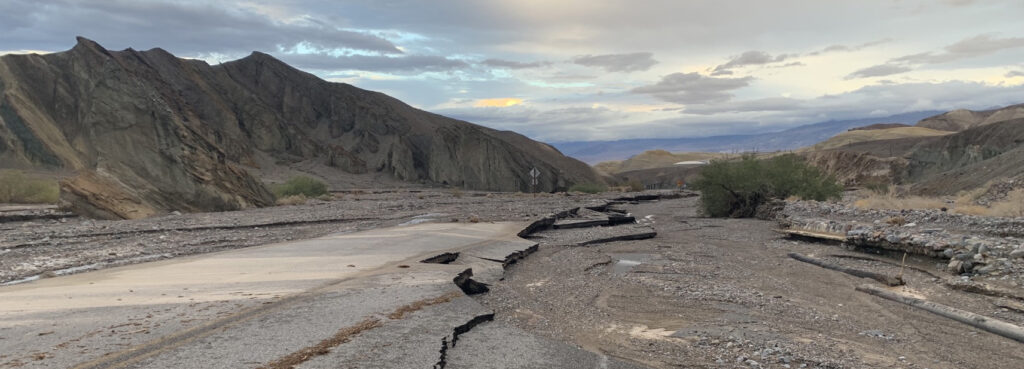Death Valley National Park is grappling with the aftermath of an unexpected deluge as California’s atmospheric rivers unleashed 1.5 inches of rain over four days last week. This surge not only inflicted damage upon the park but also put a temporary halt to ongoing repairs from previous flooding incidents.
Renowned as the driest expanse in North America, Death Valley typically witnesses a mere 2 inches of rainfall throughout an entire year. However, in the past twelve months, the park has been inundated with a surplus. Recent data from the Furnace Weather Gauge indicates a staggering 4.9 inches of rainfall in the last six months alone, with the bulk of it occurring during two significant events: the remnants of Hurricane Hilary in August (2.2 inches) and the recent atmospheric river from February 4-7 (1.5 inches), according to park authorities.
Over the past few years, unprecedented rainfall has wreaked havoc on infrastructure, leading to prolonged closures on multiple occasions. In August, Hurricane Hilary triggered road deterioration, a widespread closure of the park, and the formation of a new lake in Badwater Basin, which still lingers today.
“We initially anticipated the lake’s disappearance by October,” shared park ranger Abby Wines with Fox Weather. “To our surprise, it’s still here almost six months later. The recent rain will likely prolong its existence. While not suitable for kayaking due to its shallow depth, the lake offers mesmerizing reflections of the surrounding mountains.”
In 2022, Death Valley experienced a rainfall event described as a “once-in-a-1,000-year” occurrence, resulting in similar albeit more extensive damage. Daniel Berc, a meteorologist with the National Weather Service Las Vegas, clarified to the National Park Service, “A 1,000-year event doesn’t mean it happens once every 1,000 years; rather, there’s a 0.1% chance of it occurring in any given year.”
The recent downpour caused flash floods, debris accumulation, and numerous road closures on Tuesday. Some parts of the park even received snow, potentially setting the stage for a spectacular superbloom come Spring.
Caltrans managed to clear much of the debris, reopening CA-190 on Wednesday morning. Presently, most major park roads are accessible. However, several side roads and more remote routes remain off-limits until further evaluation.

